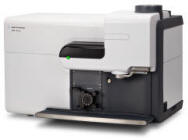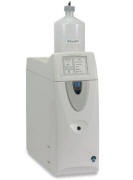Groundwater quality testing
All types of analysis in one place, fast to the results and certificates with modern methods and instruments
The Laboratory for Work and Environmental Protection offers analysis of wastewater samples. We perform sampling and chemical and physical testing of wastewater samples, for which we have the Authorization of the competent Ministry. In addition to wastewater analysis, we also perform analysis of groundwater and surface water.
Given the constant need for precise and reliable water analysis in our Laboratory for Environmental Protection, there are a number of developed methods for analysis, with a constant tendency to develop and apply new methods. As an excellent support to the analysis process, in addition to the Agilent Technologies MP-AES 4100 microwave plasma atomic emission spectrometer, the Agilent Technologies 7890A / 5975C gas mass chromatograph (GC / 5975C), a gas chromatograph with a triple quad mass detector (GC – QQ), is used. Technologies 7890B / 7010, ion chromatograph (IC) Dionex ICS 1100 and duo system of atomic absorption spectrometers with flame technique and graphite cuvette technique (AAS – FA, AAS – GF) Agilent Technologies 280FS AA/280Z AA

Gas-mass chromatograph (GC/MS) Agilent Technologies 7890A/5975C

Microwave plasma – atomic emission spectrometer Agilent Technologies MP-AES 4100

Ionic chromatograph (IC) Dionex ICS 1100

Gas chromatograph with triple quad mass detector (GC – QQQ) Agilent Technologies 7890B/7010

Duo system of atomic absorption spectrometers with flame technique and graphite cuvette technique (AAS – FA, AAS – GF) Agilent Technologies 280FS AA/280Z AA
Chemical and physical analyzes of groundwater that we offer:

- TWater temperature
- Color (descriptive)
- Anionic surfactant content
- Ammonium ion
- Floating materials (descriptive)
- Turbidity
- Electrical conductivity
- Dissolved oxygen
- pH
- Dry residue of unfiltered sample
- Dry residue of unfiltered sample
- Dry residue of the filtered sample
- Suspended matter
- Sedimentary matter
- Chemical oxygen demand
- Potrošnja kalijum-permanganata
- Biochemical oxygen demand – BOD5

- Nitrites
- Nitrates
- Chlorides
- Sulfates
- Phosphates
- Fluorides
- Bromides
- Cyanides
- Bicarbonates
- Sulfides
- Total nitrogen
- Carbon dioxide
- Total hardness
- Calcium
- Magnesium
- m-alkalinity
- p-alkalinity

Metals
- Iron
- Manganese
- Chrome (total)
- Chrome (VI)
- Lead
- Cadmium
- Copper
- Arsenic
- Zinc
- Nickel
- Pine tree
- Alive
- Sodium
- Potassium
- Antimony

- Fenol
- 2-Hlorfenol
- 2-Nitrofenol
- 2,4-Dimetilfenol
- 2,4-Dihlorfenol
- 4-Hlor-3-metilfenol
- 2,4,6-Trihlorfenol
- 2,4-Dinitrofenol
- 4-Nitrofenol
- 2-Metil-4,6-dinitrofenol
- Pentahlorfenol

- Dimetil ftalat
- Dietil ftalat
- Diizobutilftalat
- Dibutilftalat
- bis-(2-Metoksietil)ftalat
- bis-(4-Metil-2-pentil)ftalat
- bis-(2-Etoksietil)ftalat
- Dipentil ftalat
- Diheksil ftalat
- Benzil butil ftalat
- bis-(2-n-Butoksietil)ftalat
- Dicikloheksil ftalat
- bis-(2-Etilheksil)ftalat
- Di-n-oktil ftalat
- Dinonil ftalat

cyanides
- Total
- Free
- Easily volatile
- Hydrocarbons – the range of gasoline
- Hydrocarbons – a range of diesel
- Mineral oils
- Fats and oils

- Gasoline
- Toluene
- Ethylbenzene
- Xylene
- Styrene
- Chlorobenzene
- 1,2-Dihlorbenzen
- 1,3-Dihlorbenzen
- 1,4-Dihlorbenzen

Polycyclic aromatic hydrocarbons (PAH)
- Naftalen
- Acenaftilen
- Acenaften
- Fluoren
- Fenantren
- Antracen
- Fluoranten
- Piren
- Benzo(a)antracen
- Krizen
- Benzo(b)fluoranten
- Benzo(k)fluoranten
- Benzo(a)piren
- Indeno(1,2,3-c,d)piren
- Dibenzo(a,h)antracen
- Benzo(g,h,i)perilen

- BHC-α
- BHC-β
- BHC-γ (Lindan)
- BHC-δ
- Heptahlor
- Aldrin
- Heptahlor-egzo-epoksid
- trans-Hlordan
- α-Endosulfan
- cis-Hlordan
- 4,4′-DDE
- Dieldrin
- Endrin
- β-Endosulfan
- 4,4′-DDD
- Endrin aldehid
- Endosulfan sulfat
- 4,4′-DDT
- Endrin keton
- Metoksihlor
- Heksahlorbenzen

Alcohol
- Methanol
- Ethanol
- Propanol
- Isopropanol
- 1-Butanol
- 2-Butanol
- Acetone
